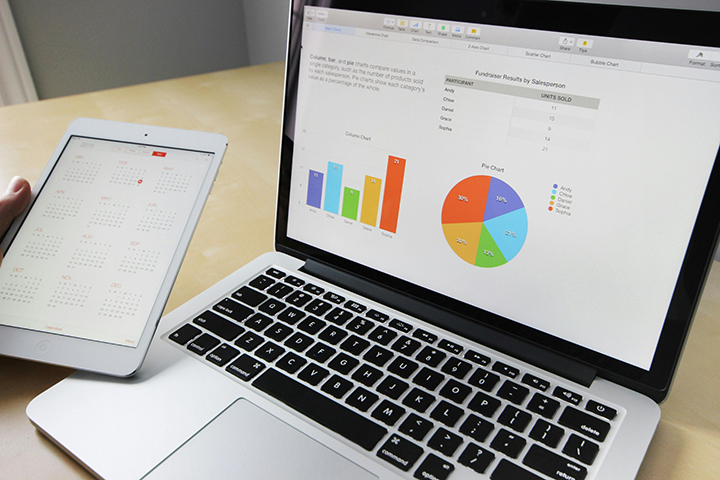An audit approach to analyze your Digital Workplace’s performance

The Digital Workplace : Challenges and risks
The use of the Digital Workplace is becoming increasingly widespread within companies, particularly in the wake of the health crisis, when telecommuting began to spread widely among employees. Its popularity is due to the flexibility it brings, enabling employees to work ATAWAD (Anytime, Anywhere, Anyday).
However, the digital work environment presents many challenges, such as the growth in mobility, usage and virtualization. Employees routinely use a multitude of endpoints (smartphones, PCs, tablets) as well as diverse collaboration and analysis tools.
The changes that the digital workplace has brought to the daily lives of employees entail a number of risks, such as financial slippage, loss of control over the IT inventory and its uses, and inflation of the digital carbon footprint.
The repercussions of underestimating its risks
If companies underestimate the aforementioned hazards, they could face a multitude of barriers concerning the Digital Workplace, such as:
- Lack of visibility on a multitude of suppliers
- Lack of usage indicators
- Lack of cross-functional coordination (business, purchasing, HR, IT)
- Lack of resources
- Lack of expertise
- End-user dissatisfaction
- Lack of correlation between purchasing policy and operations
Auditing to prevent these negative consequences
Corporate CIOs can prevent these risks by carrying out an audit of their Digital Workplace. This involves an analysis of the performance of the various aspects of a company’s Digital Workplace, based on three axes:
- Financial performance
- Operational performance
- Environmental performance
The financial performance analysis is the equivalent of a telecom audit : covers expenses generated by the mobile inventory, resource allocation, invoicing, the invoice payment delegation process, contract management and usage analysis, and cost re-invoicing between different departments.
As for the operational performance audit, it analyzes the IT inventory management process, orders and catalogs, as well as mobile inventory security.
The environmental performance analysis analyses the CO2 emissions of IT equipment and compares them with the targets set by the company. The lifecycle of the equipment and the management of its end-of-life are also parameters taken into account by the audit.
Digital Workplace audit procedure
The Digital Workplace audit is carried out in the form of a DiagFlash , an approach that examines the company’s data and quickly identify areas for improvement in financial, operational and environmental terms.
The audit begins with a scoping phase, during which we validate the scope of the analysis and the objectives to be achieved. We also gather technical, financial and organizational information from the customer. A multi-disciplinary team of experts then analyzes this technical data in detail, identifying and presenting the various areas of optimization that can be achieved in the short and medium term.
Once the audit has been completed, CIOs must monitor the implementation of its recommendations and manage the actions required to resolve the improvements identified.
The benefits of conducting a Digital Workplace audit
The return on investment (ROI) of an IT audit can be assessed differently, depending on the focus of the Digital Workplace audit.
Financial performance ROI
- Budget strategy to pay for future technology upgrades
- Cost optimization (internal and external)
- Detection of billing and taxation errors
Operational performance ROI
- Up-to-date asset inventory
- Recommendations for service optimization
- Roadmap for phasing out obsolete technologies.
- Improved process for employee arrival and departure
- Improved user satisfaction
ROI for environmental performance
- Improved equipment lifecycle process
- Optimization of equipment energy performance
- Implementation of reconditioning and recovery strategies
Why entrust this mission to Digital Workplace experts?
Due to the diversity of the scope covered by audits, companies often turn to specialized service providers to analyze a specific dimension of their operations. For example, companies looking to optimize their spending will source a telecom audit provided by FinOps experts, those aiming to assess their security systems will contact a provider specializing in endpoint security, and beyond.
However, these providers will only be able to deliver audits in their areas of expertise, and companies wanting a multi-disciplinary analysis would have to contact various contractors, which would become costly and time-consuming.
This is where Digital Workplace experts come in. These are service providers capable of conducting audits on all three dimensions of the digital workplace, enabling companies to save on analysis-related expenses. Outsourcing the audit of the entire Digital Workplace also saves time when negotiating the contract. Finally, service providers can adjust the frequency and scope of audits as the company’s Digital Workplace evolves.
Saaswedo is positioned as much as an expert in the Digital Workplace, and in collaboration with our partners Lucernys and EPSA Transfo & Digital, we offer audit services covering all perimeters related to the digital work environment and IT systems, tailored to your company’s needs. To find out more about Saaswedo’s offer, click here.
Companies can turn to a Digital Workplace expert to conduct a performance audit, in order to reduce risks associated with a virtual work environment.
Benefits
- Budget strategy to pay for future technology upgrades
- Cost optimization (internal and external)
- Detection of billing and taxation errors
- Up-to-date asset inventory
- Recommendations for service optimization
- Roadmap for phasing out obsolete technologies.
- Improved process for employee arrival and departure
- Improved user satisfaction
- Improved equipment lifecycle process
- Optimization of equipment energy performance
- Implementation of reconditioning and recovery strategies


